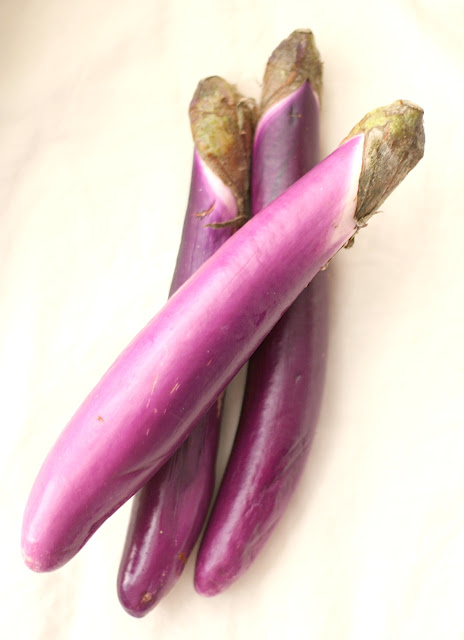The mister and I have been talking a lot about health lately. We've made a lot of changes to our lifestyle in the few years we've been married, which I think have improved our health a lot, but we can definitely do better. I often make a 100% whole grain brown rice loaf from
the sequel to
my favorite bread book, because it really is delicious and you feel so good eating it. I had some dough and a bunch of produce in my fridge, so I decided to make a fresh, light, healthy pizza. And it was awesome! The dough crisped up just right, and the veggies charred just right in the super hot oven. And I felt good eating it. And the best part was that it was delicious. What's the point in healthy food if it isn't good to eat, right? I loved that you could see everything that was on there. Of course with my almost 3 year old, it meant she could pick off what she didn't want, but she actually ate most of it because I let her help me put the toppings on.
It was so tasty, in fact, that I invited my health-foodie friend Melissa over for lunch a few days later and made it again. We had a lot of fun changing up flavors and textures. I'm in love.
I used pecorino romano cheese because you get so much flavor in just a little bit, and since I was going for a healthy pizza, I didn't want to be weighed down by cheese.
For longer cooking vegetables like eggplant and super water-logged vegetables like mushrooms, please take the time the sauté them ahead of time. (I used Japanese eggplant and plain old white button mushrooms, but any eggplant or mushroom varieties would be delicious!) Otherwise your eggplant will be spongy instead of buttery, and your mushrooms will release a puddle of water on top of your pizza. And when sautéeing mushrooms, do it in batches. There should always be enough room for the mushroom slices to be in a single layer in your pan or they will not brown, they will steam. And you want a little caramelization. Mmmm.
Please keep in mind that this is a VERY flexible recipe. Whatever looks good at your farmer's market or local grocer's produce section is what you should use. If your shallots are smushy but the red onions are firm and glossy and perfect, go with the onions. If the spinach is wilty but the arugula looks perky, go with the arugula! Or skip it all together. Pick what looks fresh and entices you. And have fun doing it.
Weeknight healthy pizza
makes 2 10~12 inch pizzas
1/2 lb fresh whole wheat pizza dough (if you need ideas on where to go for a good pizza dough recipe, email me. I will hook you up)
1 Japanese eggplant (or 1/3 medium globe eggplant), diced small and sautéed
4 ounced white button mushrooms, sliced and sautéed until golden brown
1 bunch broccoli rabe or broccoli, trimmed, (in the case of broccoli, stems removed), and sautéed lighty, if desired
handful of baby spinach leaves, torn into little pieces
2 shallots, sliced VERY thin
1/4 c pecorino romano cheese, grated
10~15 cherry (or grape) tomatoes, cut in half
2~3 small sweet tomatoes, sliced thin and pulp and seeds removed
any other veggies you like:)
garlic infused olive oil
fresh herbs such as parsley and basil
for the sauce:
10~12 sweet tomatoes, quartered
2 cloves garlic, grated or minced
1 tablespoon olive oil
salt to taste
- Heat a small saucepan over medium heat. Add the olive oil and garlic for the sauce, and cook until garlic is fragrant. Add tomatoes. Cook, stirring often until tomatoes break down and thicken. Add salt to taste. Set aside.
- Preheat the oven (with a pizza stone or upside down cookie sheet) to 500°F. Cut the pizza dough in half and roll out as thin as you can without tearing. Place gently on a pizza peel prepared with cornmeal. Spread on about 3 tablespoons of the tomato sauce, sprinkle about 2 tablespoons of cheese, then add whatever vegetables you like. Add tomatoes and shallots last to ensure good caramelization. Quickly slide pizza off of the pizza peel onto the stone and bake for about 10 minutes, or when crust is crisp and vegetables are browned. Add fresh herbs. Repeat with second pizza. Let cool slightly before serving.










